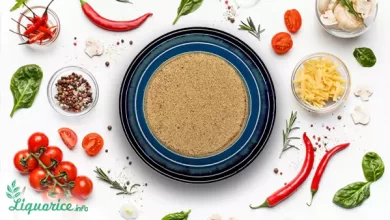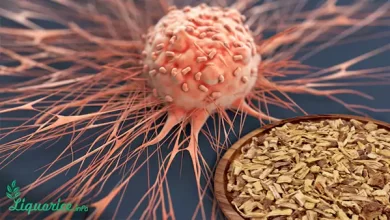Licorice in Traditional Medicine
Licorice Structure
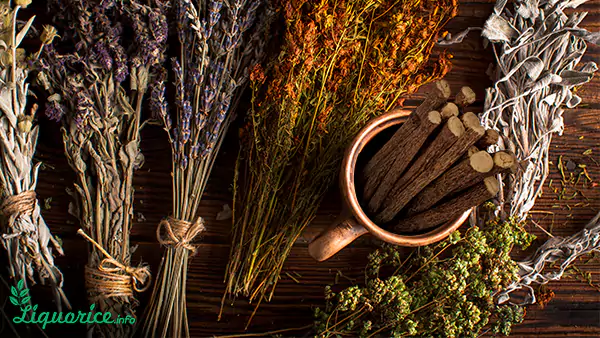
Licorice is a self-growing plant, mostly found in Europe, Africa and Asia including Iran. As a folk and herbal remedy, it has a long history in Western and Eastern traditional medicine. It is useful in treatment of peptic ulcers, heartburn, indigestion, cough, sore throat, oral and dental problems, skin diseases, and many others. Licorice has been considered as a magical herb in traditional medicine. Licorice medicinal effects have always been considered prominent in traditional and modern medicine
Sepidan Osareh Jonoob company presents this article about licorice in traditional medicine.
Licorice Structure
Licorice contains vitamins B and E and minerals such as potassium and magnesium, sterols, amino acids etc. Licorice has got isoflavonoid, flavonoid and saponin.
Glycyrrhizin is the main component of licorice. It is the agent of sweetness in licorice. It is about 50 times sweeter than sugar. Licorice extract is rich in antioxidants. Based on studies, an active antioxidant (Licochalcone A) is the main ingredient in licorice root extract.
Licorice contains a substance which has anti-inflammatory and anti-bacterial properties.
It acts as an expectorant, removing extra mucus from airways.
In Chinese, Indian, Persian and Greek traditional medicine, licorice was assumed an effective herbal treatment for heartburn, cough, eczema, sore throat, hair loss, bronchitis, canker sores, and so on.
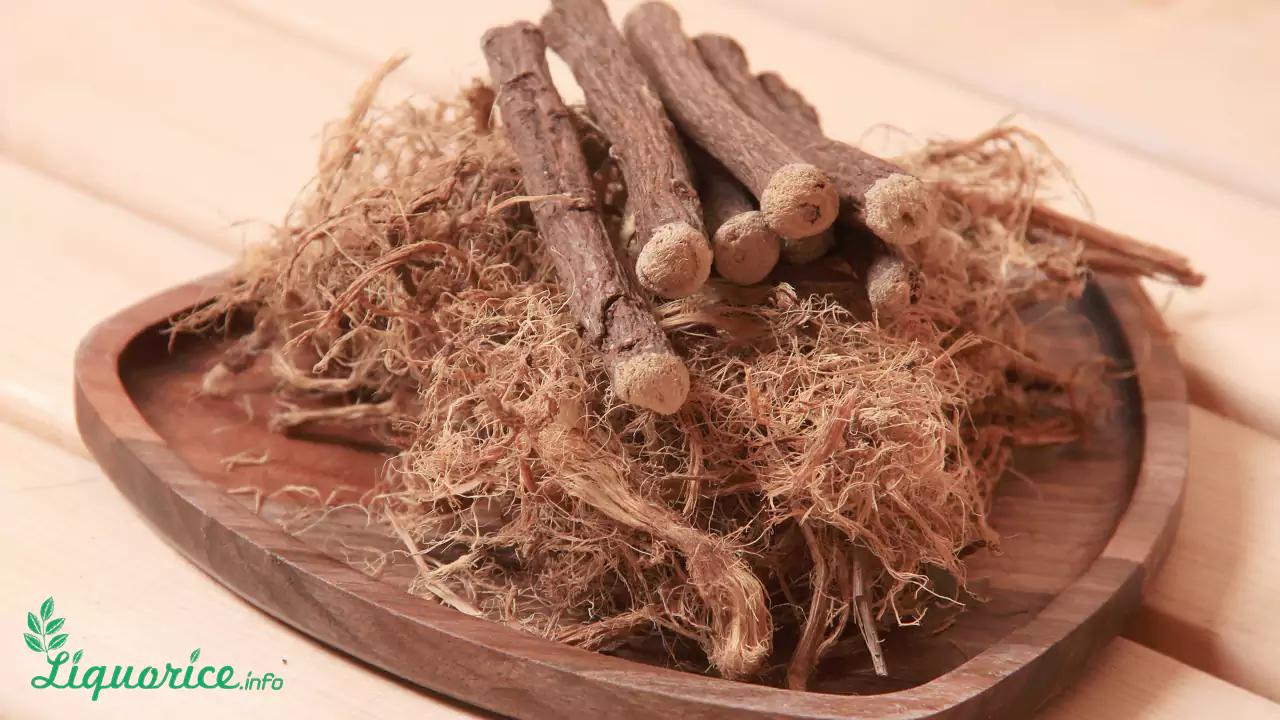
Licorice in Indian Traditional Medicine
In Indian traditional medicine, it was believed that licorice increases stomach fire, stimulate appetite, helps in digestion, improves breathing, relieves cough, prevents vomiting, quenches thirst, prevents ageing, relieves hot flushes, manages disorders in urinary tract, enhances muscles strength, improves complexion and treats skin disorders, relieves difficulties in breathing, treats intestinal worms and indigestion, reduces fever, and many others.
Licorice in Chinese Traditional Medicine
Licorice in Chinese traditional medicine has been a prominent herb. There is a traditional theory in China that “nine out of ten formulas contain licorice”. It is also referred as a “guide drug”. It increases the efficiency of other herbs when it is combined with them. Licorice is recorded in the list declared by the Ministry of Health of China, as a traditional medicine used for 1000 years. It is said that licorice increases strength and endurance of our body. It also cures cough, phlegm, pain and spasms. In historical document related to 200 B.C, licorice was classified in edible and non-toxic herbs.
Generally, licorice in traditional medicine is recorded to be good for the following conditions:
Licorice Benefits for Skin
Licorice extract prevents infection and contamination on the skin surface and keeps it clean. Licorice contains a substance which has anti-inflammatory and anti-bacterial properties and is effective in treating acne, eczema and psoriasis. Hyperpigmentation is caused by the abnormal collection of pigments, making some dullness and blemishes appear on the surface of skin. Using licorice is a proper solution for this problem.
Licorice root has many benefits for hair and one of them is the treatment of dryness and oily scalp.
In Indian traditional medicine, this plant has been used for better hair growth and prevention of hair loss.
Licorice extract is rich in antioxidants, so it is anti-aging and rejuvenating; it helps regenerate collagen to keep our skin soft and smooth.
An active antioxidant in licorice is able to protect the skin against UV rays.
Licorice has been consumed in face masks, hair masks and it has been rubbed on skin in traditional medicine.
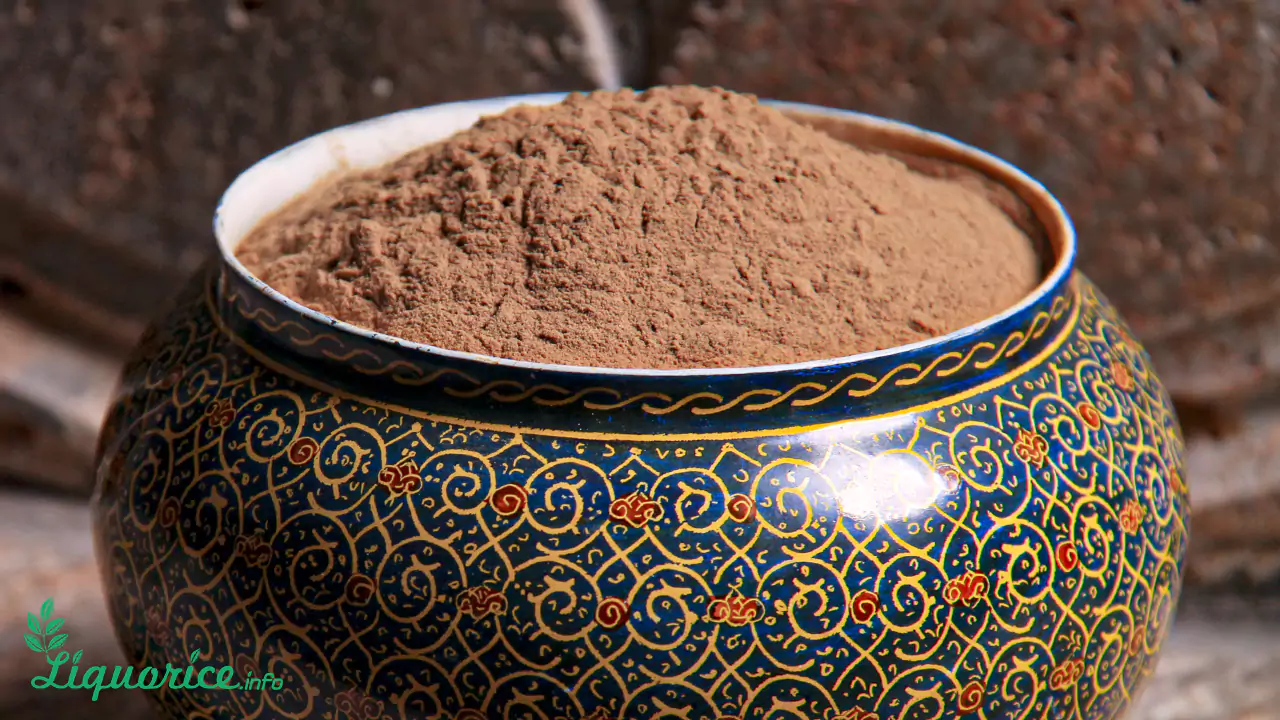
Licorice Benefits for Our Digestive System
Licorice is useful in treatment of stomach pain, indigestion, heartburn and acid reflux. Peptic ulcers in intestine and stomach are caused by inflammation with bacteria. Licorice root and its glycyrrhizin are useful in treating peptic ulcers. Taking licorice controls acid reflux and prevents heartburn.
Licorice in Oral and Dental Health
Some plants have been used for oral and dental health for a long period of time. Licorice is one of these plants. Since it has anti-bacterial, anti-viral, anti-inflammatory properties. It prevents cavity and tooth decay by fighting against special bacteria.
Licorice as a Treatment for Sore Throat, Cough and Asthma
Airway inflammation is a common problem in respiratory diseases such as asthma. Licorice has some anti-inflammatory compounds that are helpful in treatment of these sicknesses. Licorice root can slow down the progress of bronchitis. Licorice root has been widely used to treat bronchial asthma for many years.
Licorice tea has been consumed for mentioned problems since a long time ago.
Provided by: Sepidan Osareh Jonoob Co.
Editor: Meysam Shokripour
References : iranlicorice.com



